One of the things that delights me wherever I live is getting my hands in dirt to care for the local Earth. Way back in Oakland more than 20 years ago, I helped grow dozens of types of locally native plants, like monkeyflower and bedstraw and others, and then plant them in the mud next to their creek. This was a massive restoration project run by the Friends of Sausal Creek, and those 20,000 plants put in over two winters grew like gangbusters. A decade later, after I’d moved away, I visited the replanted creekside and was thrilled to find a green understory now thick and tall, stretching over my head. The work of the Sausal Creek group has only grown and expanded over the years—maybe the best local watershed group I’ve ever met.

A decade later in Boulder, at the entrance to Chautauqua Park, I helped to care for a native plant demonstration garden. A group of regular volunteers rooted out bindweed and planted prairie smoke and pasqueflower and columbine and more. Sometimes we trimmed back chokecherry to let the plants shine.
When we sat together on that hillside with our hands in dirt, pulling out bindweed, we had the best conversations. We might not be able to see each other through the screen of plants, but we were just inches away from each other so we were busy talking—puzzling out world peace and personal spiritual paths and other mysteries related and unrelated to gardening.
Tropical Dry Forests
Now, on Maui, I’m volunteering for the Auwahi Forest Restoration Project, where we are growing trees and plants of Maui’s dry forests and returning them to the mountain.
Many people don’t know about tropical dry forests—the forests that grow on the leeward sides of our volcanoes, away from the wind and rain. The prevailing eastern trade winds hit our island chain, and as the air rises to cross each mountain, the clouds cool and drop their moisture so that the east side of each volcano is lush and green—the stereotypical wet tropical forest. By the time the air crosses the mountain, it has little moisture left, so the west side is dry. But the dry side of each volcano grows a forest that, when healthy, nourishes more biodiversity than the better-known wet side—more species of birds, more diversity of trees and plants. And the Auwahi project is bringing that dry forest back to life.
Hands in Dirt
It’s always a treat to get my hands in dirt and listen to the magic happen. A typical volunteer morning at the native plant greenhouse starts out a little awkward and quiet as people shyly trade names with each other. But then our fingers hit the dirt, and it doesn’t take long for the soil and the plants to share their mana (spirit) with us. Tongues get loosened, everyone starts chatting, and by the end of the morning we’re all friends.
Olopua
On a morning in late November we transplanted tiny shoots of olopua, or Hawaiian olive (Nestegis sandwicensis), a mainstay of the dryland forest. It’s a tree that typically grows to a height of 30 feet with a crown 40 feet wide, and its wood is so dense and hard that traditionally Hawaiians used it for house posts and digging sticks and weapons like daggers and spears. It is said to burn hot even when the wood is green.

Like about 90 percent of our native Hawaiian plants, the olopua is endemic, meaning it is found nowhere else in the world. So if it dies here, it is gone forever. Which means that when we handle these tiny seedlings we feel a deep reverence. These stems are precious, their very being a gift, and to take part in giving them back to the mountain is a rare privilege.
On the day we worked with olopua, we transplanted a thousand or more into dibbles, the little planting tubes that give each sprout a chance to grow a taproot. The dibble is the baby tree’s last stop before going back into the mountain.
Four months later the olopua keiki (children) were thriving!
And now these keiki have returned to the mountain because the group has held a couple of planting days this month up in the forest.
The Restored Native Forest
I haven’t seen the restored forest yet, but here is what it looks like from the air. Any restoration project in Hawaiʻi has to begin with a fence to keep out the thousands of feral pigs and deer who are roaming the mountainsides and devouring all greenery. But once a fence is up, the forest within it can thrive, especially when it is given a boost with thousands of fresh plants. There are three separate squares of restored dry forest now near the top of Haleakalā, and more to come. People’s efforts are making a difference.

Art Medeiros, the research biologist who started this reforestation project more than 25 years ago, says that back then it was thought that once tropical dry forests were gone, they were gone for good. But just by fencing out the ungulates (ground-browsing animals) and offering a few plants back to the soil, the mountain took up the challenge and started filling in its whole family of plants—first the common ones, then the rarer ones. The forest was just waiting to regrow! To hear the whole story of the project, watch Art’s TEDxMaui talk on hope.
Palapalai
At the greenhouse on a morning in December, we transplanted palapalai (Microlepia strigosa), a fern sacred to the hula dance and popular in leis. It is gathered for the hula altar because palapalai is the kinolau (physical manifestation) of Laka, the Hawaiian goddess of hula.
These palapalai were tiny and delicate and took even more loving attention and careful fingers than the keiki of olopua.
Three months later the palapalai were thriving. They too will be returned to the mountainside to grow in the understory as the crown of the forest closes over and provides moist shade for them to enjoy.
Aʻaliʻi
Finally, on an April morning we gathered at a brand-new greenhouse—a second greenhouse closer to the forest!—to transplant aʻaliʻi (Dodonaea viscosa), another big tree and mainstay of the Hawaiian dry forest. Aʻaliʻi trees grow to about 25 feet tall and put out red sepals and seeds, and the Hawaiians used their seeds to dye kapa, their bark fabric.
If you don’t know the kapa-making process, it’s a thing of wonder: collecting strips of the inner bark of the paper mulberry tree, soaking the fibers to gently ferment them, pounding the fibers over and over until they are paper thin, shaping them into cloth, pounding it some more, dyeing the cloth, and printing it with designs. When well made, kapa cloth feels like silk.
Art often gives us a short cultural lesson to remind us why we are working with the plants. On the day we transplant aʻaliʻi Art tells us to imagine a vat of red water. So many red seeds it takes to color a whole vat of water—thousands of seeds! That is how numerous these trees were.
Art explained that the aʻaliʻi trees have not reproduced sexually for almost 200 years. “When the forest was destroyed, the boy trees and girl trees were separated too far to find each other anymore,” he says sadly. So the trees changed gender—many trees can do this, who knew?—and for the past 200 years they have been producing both seeds and pollen on the same tree. “But now we’re going to give the trees a chance to find each other again,” he adds. “They can grow thick enough again to be relieved of that stress.”
Completing the Family
He makes a point that I’ve not heard elsewhere: “We are restoring the forest for the Earth, yes,” he says. “But we are doing it for the people. Because how can you revive the traditional lifeways of the people without the plants they loved and lived with and interacted with?”
To the Hawaiians, all plants and animals and people here on these islands are related because, as the Kumulipo, the creation chant, tells us, all were born from the same mother and father: Wākea the Sky Father and Papahānaumoku the Earth Mother.
Everyone here is family.
So we restore the forest for the people to reclaim their family members, to be reunited with their lost relatives. We restore the forest so that people may be reintegrated with the forest.
It’s the greatest possible restoration purpose I can imagine.




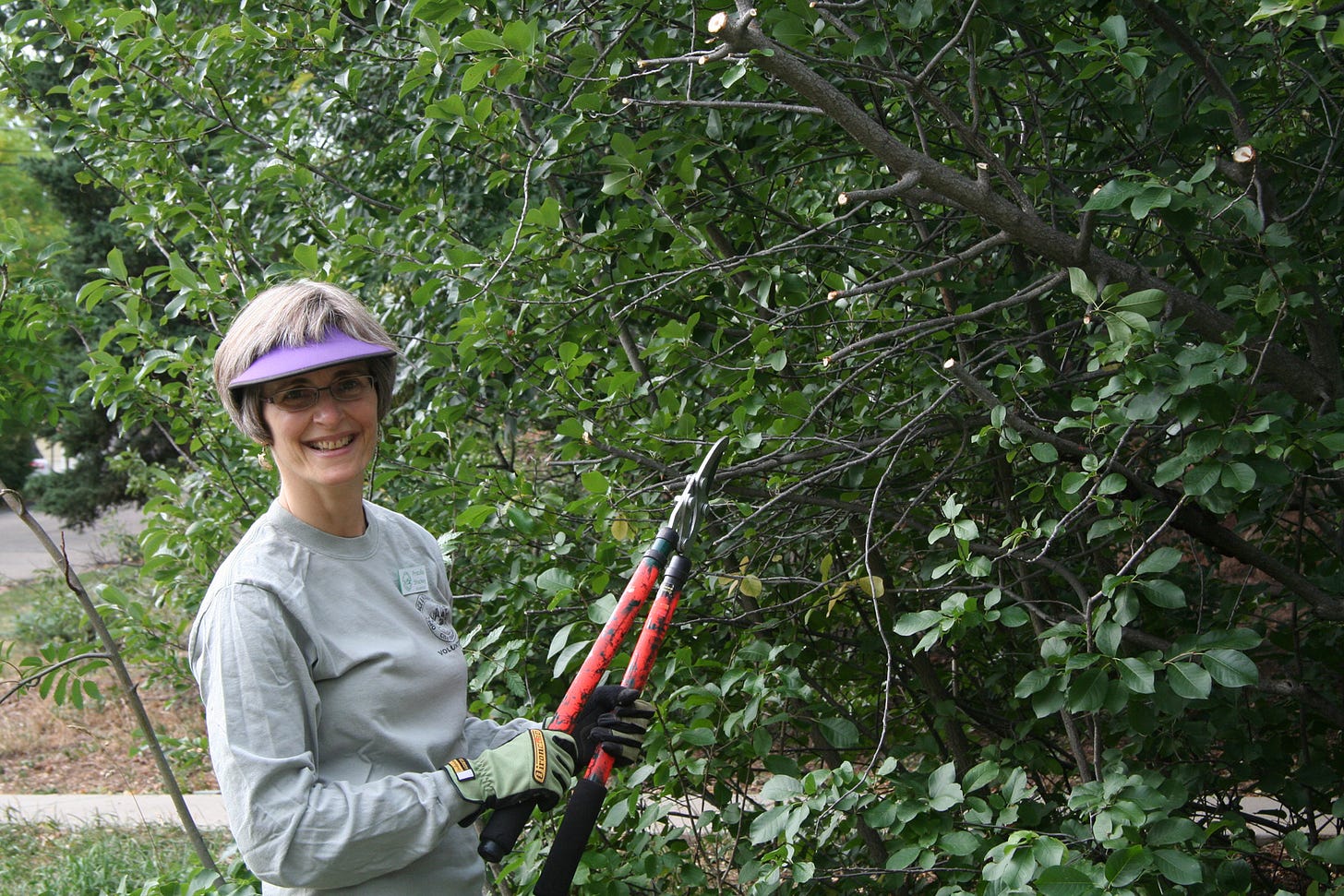
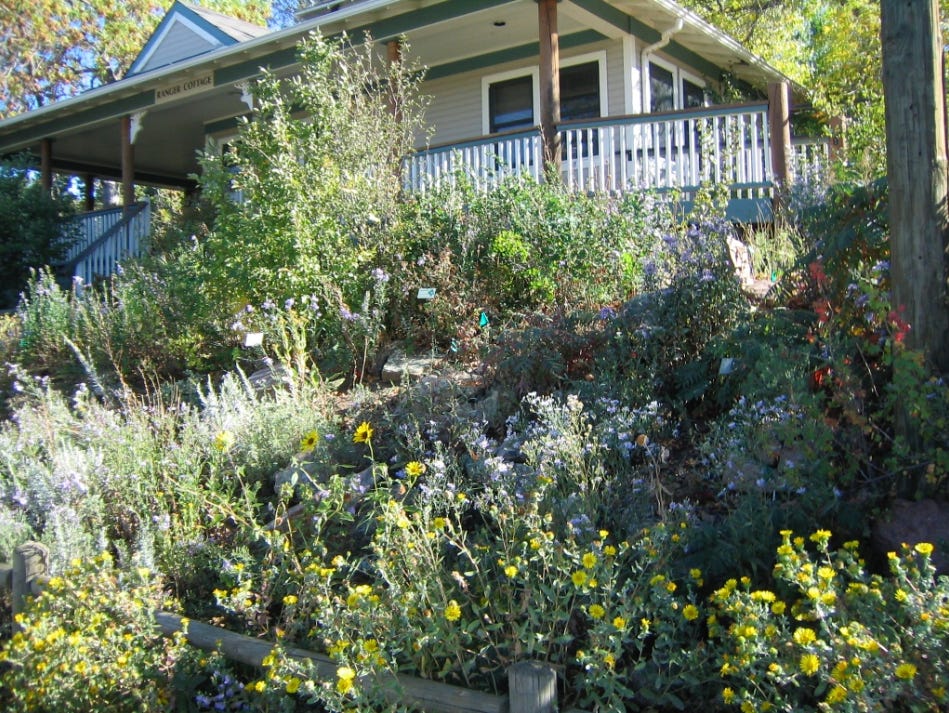
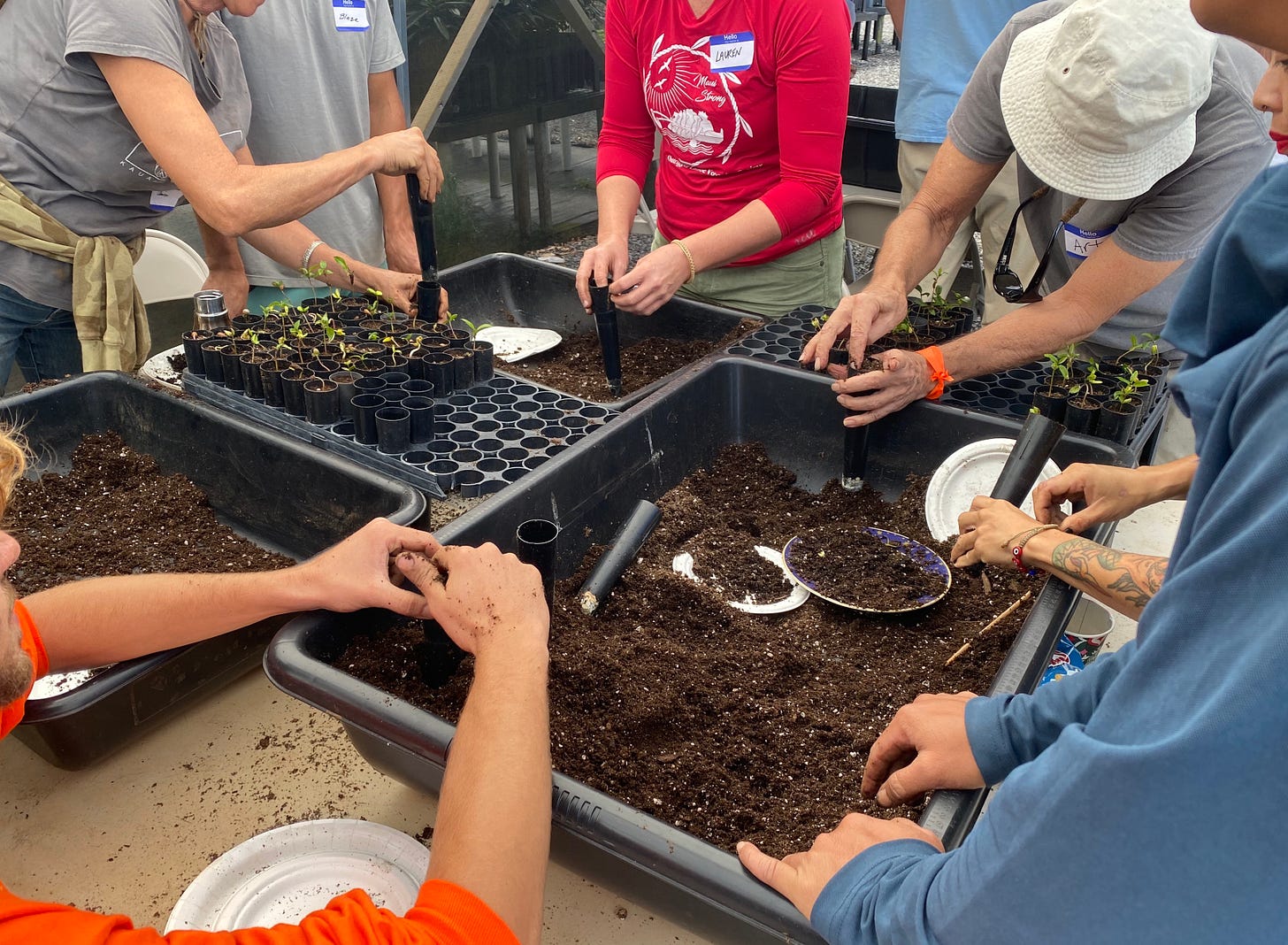
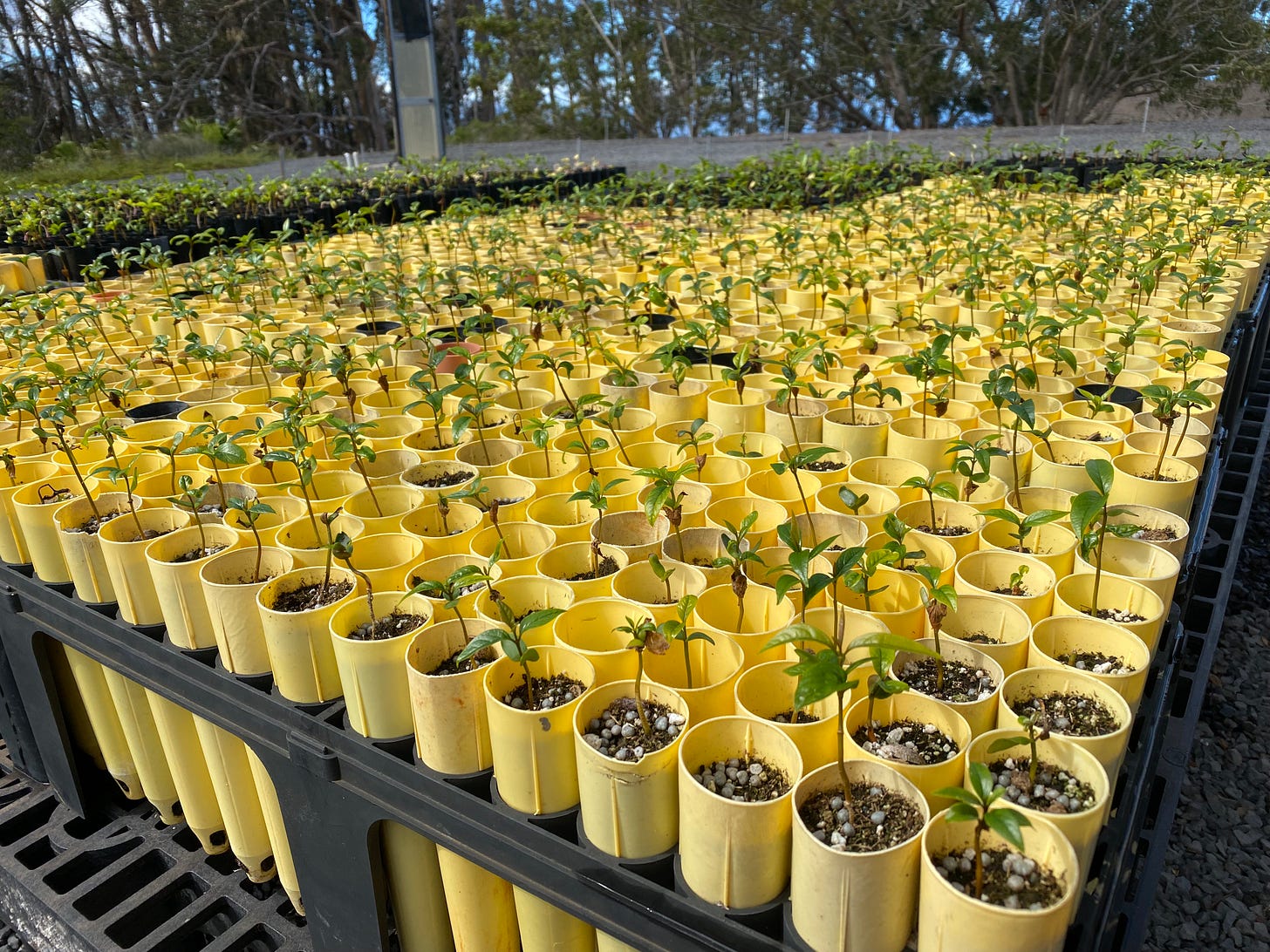
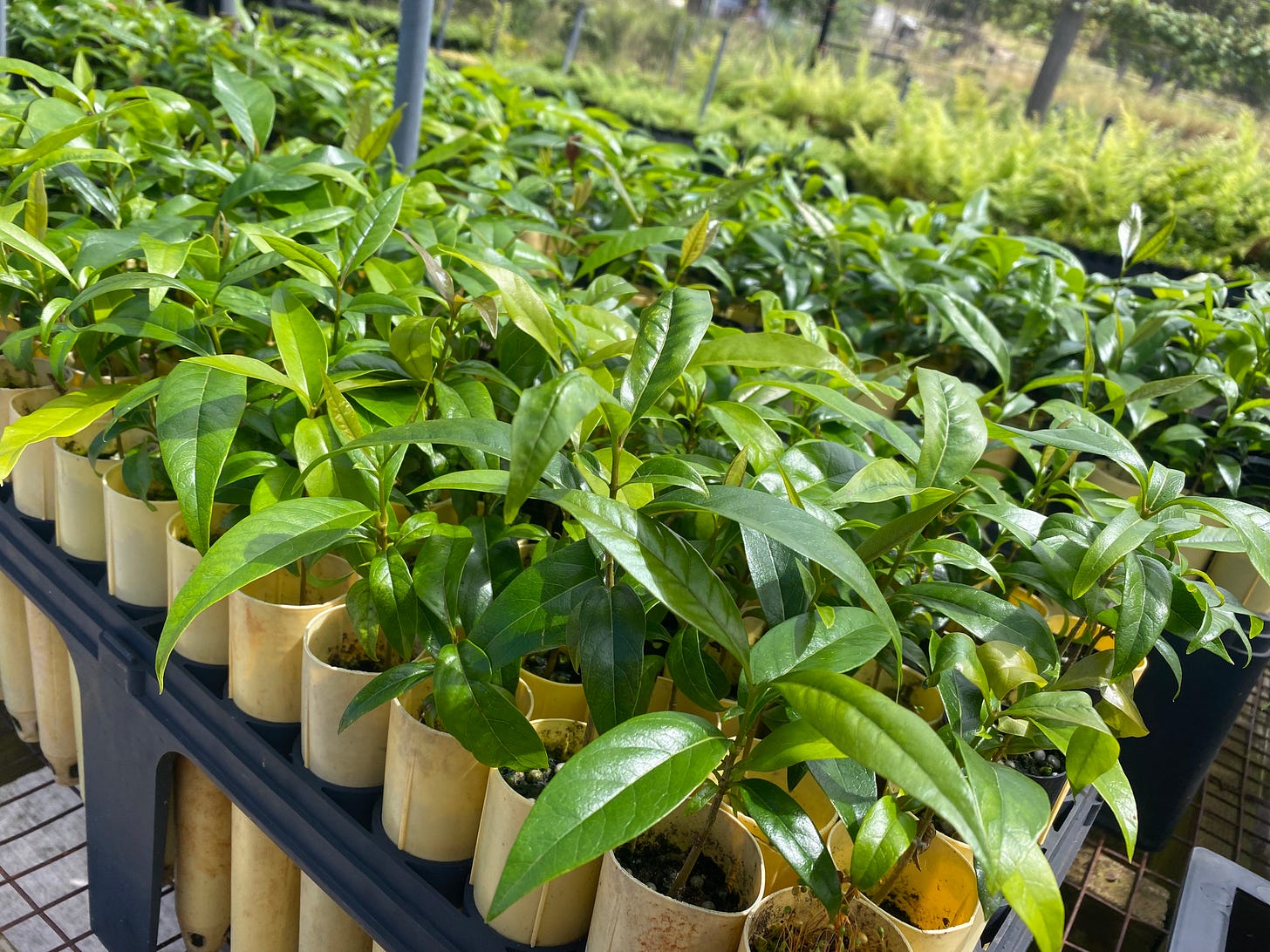
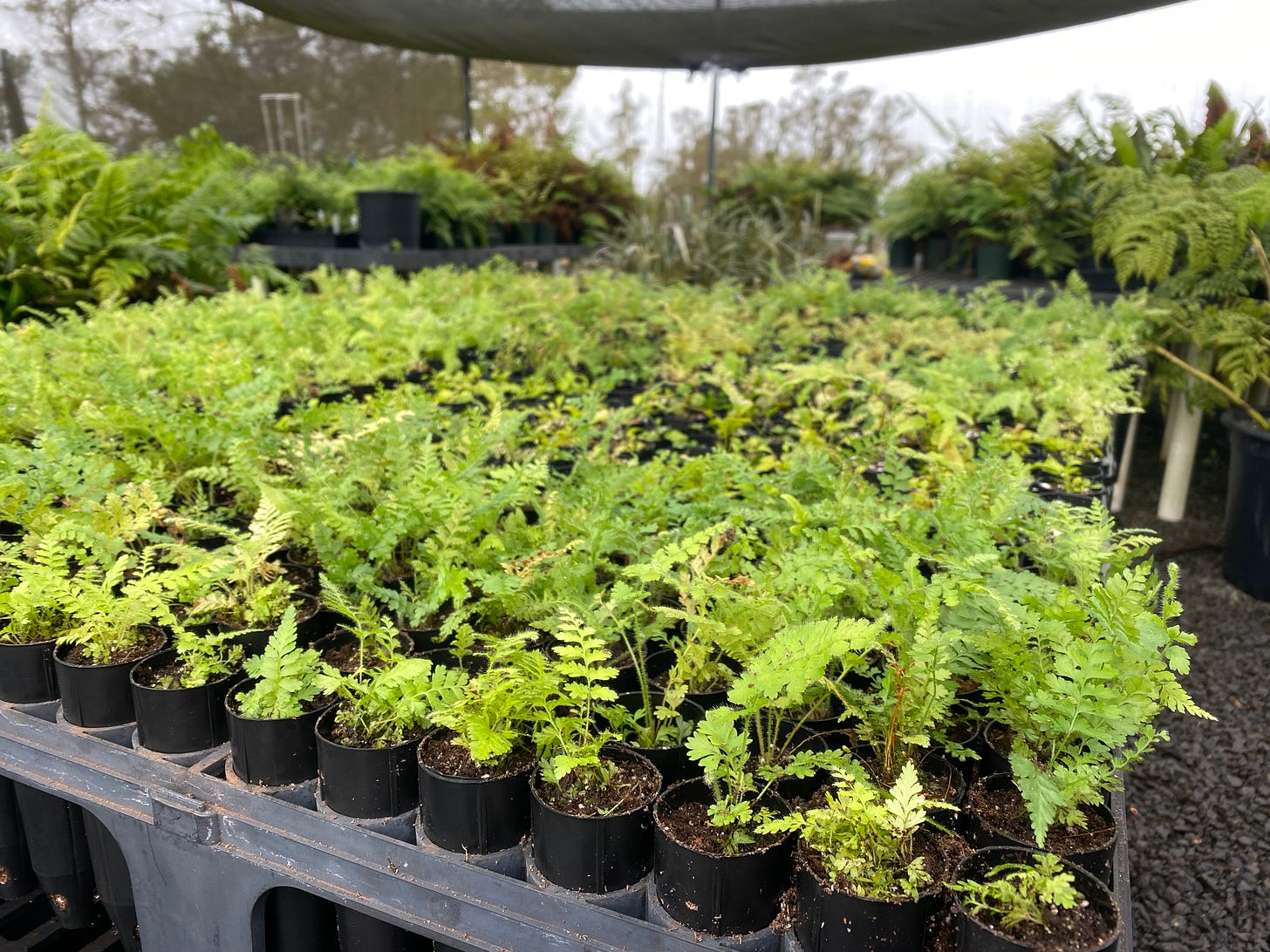
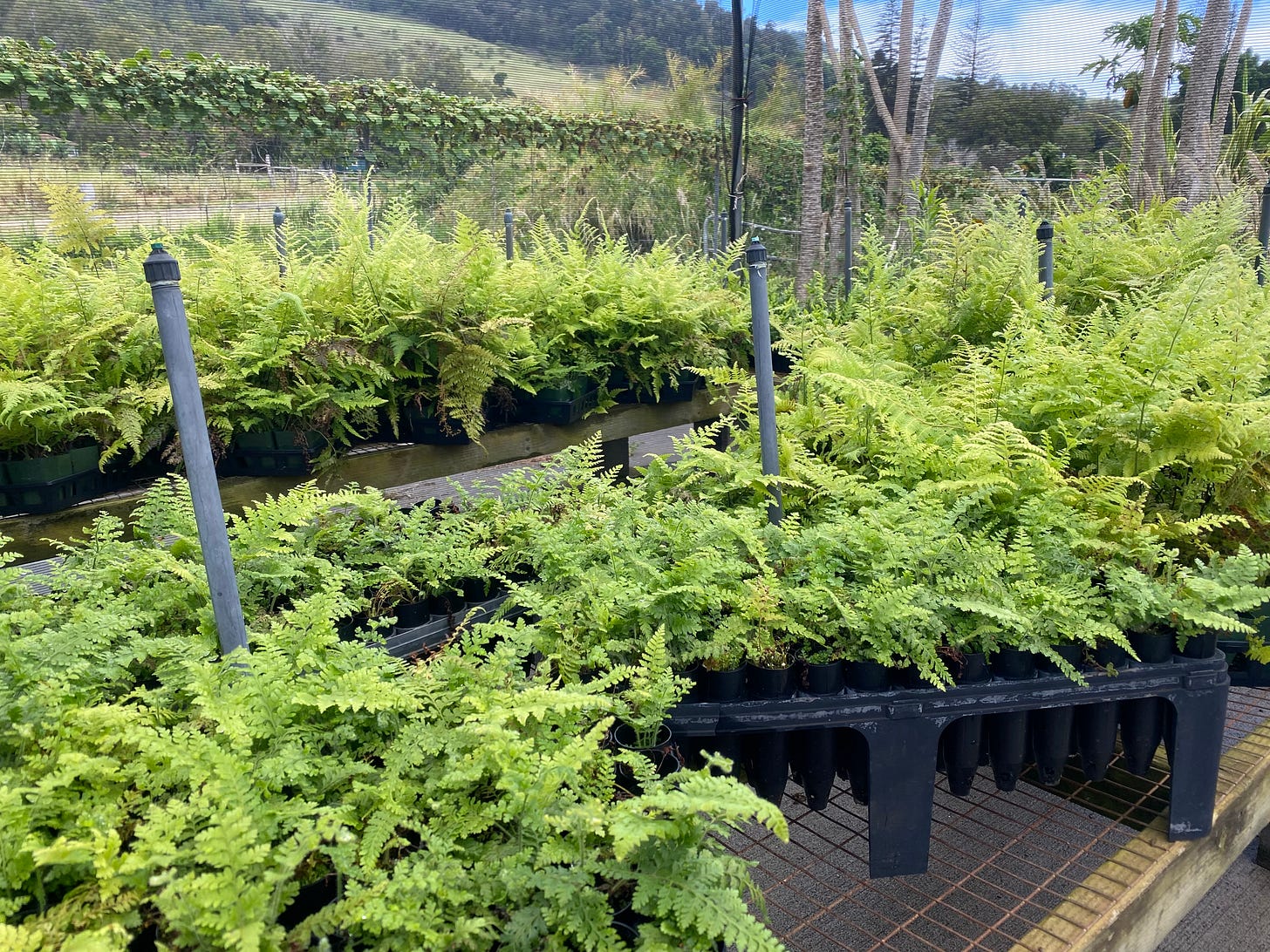
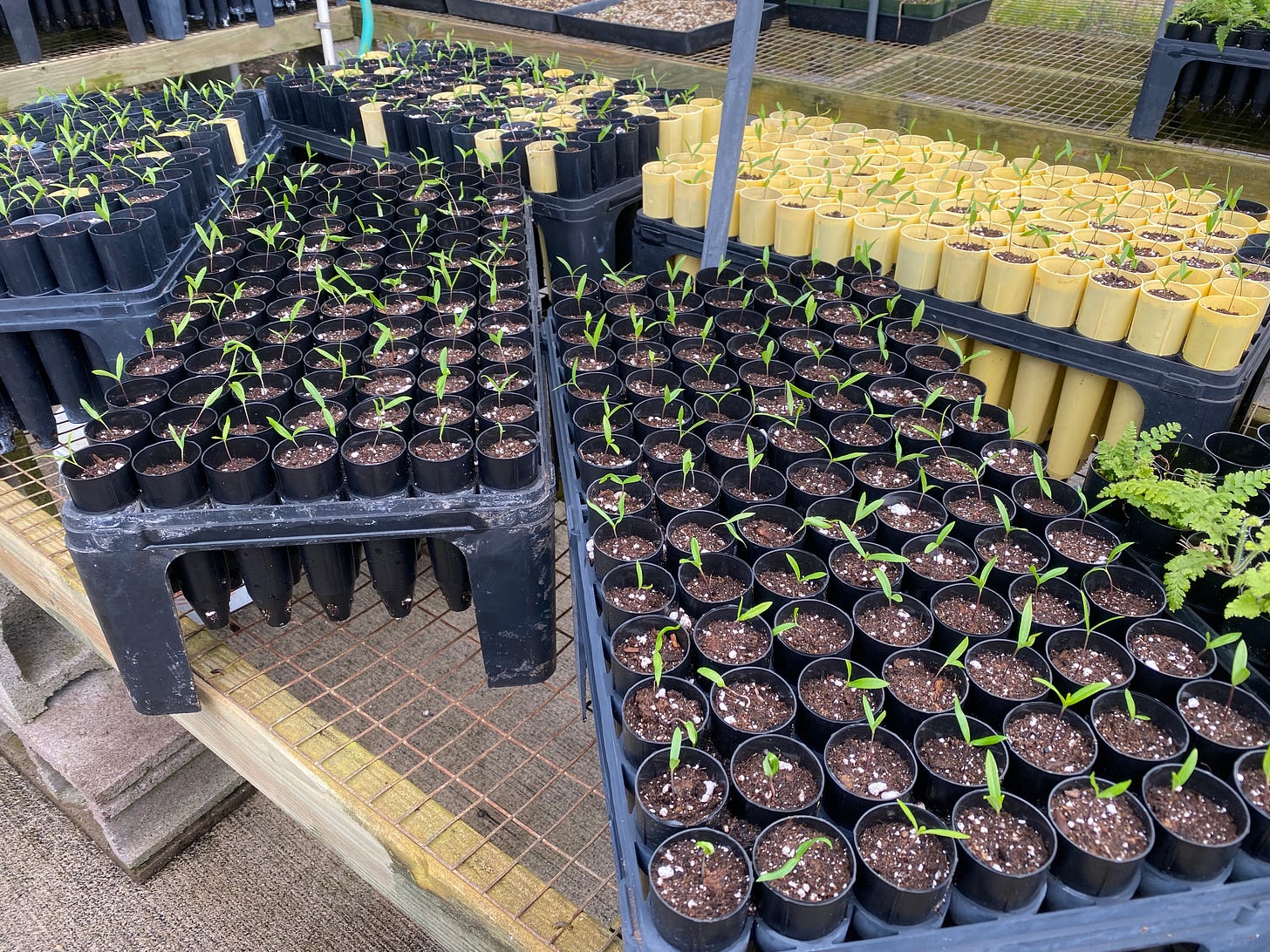
Thanks, Priscilla. I'll be in Boulder in a couple of weeks. Will try to check out Chautauqua.
Wonderful! Love this! Are the wild boar native to the land?